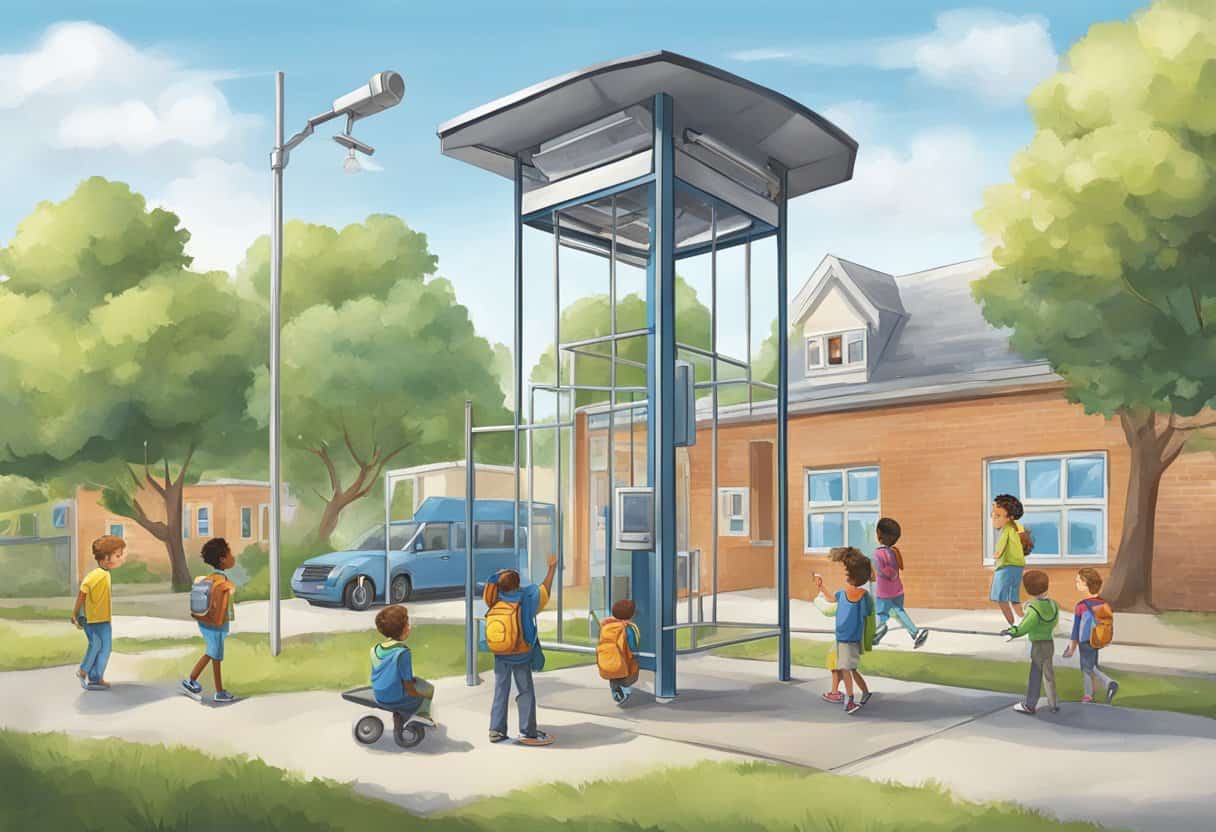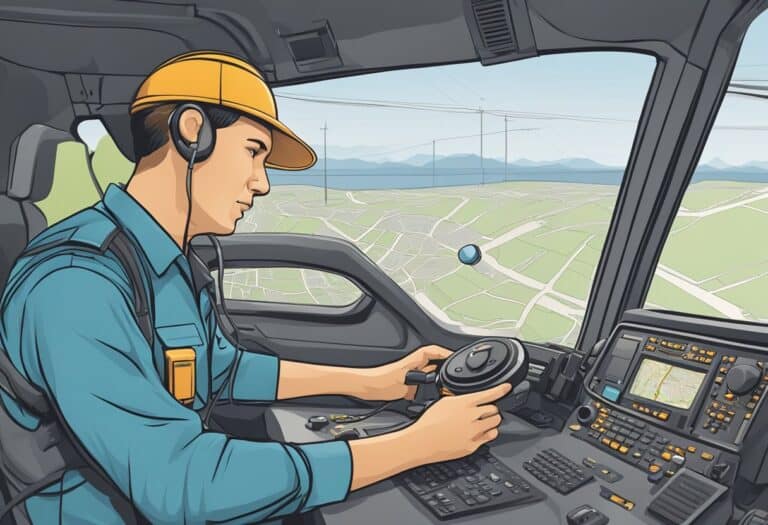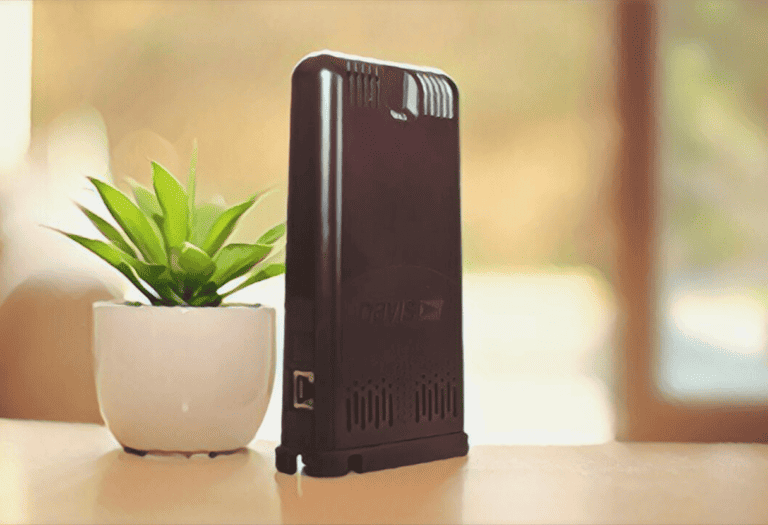Weather stations in schools offer a hands-on approach to science education, allowing students to explore meteorological concepts and engage with real-world data collection.
By integrating these devices into the school curriculum, kids have the opportunity to learn about the environment in a tangible way. This approach not only enhances their understanding of weather patterns but also fosters a deeper interest in scientific inquiry and the potential impacts of climate on their daily lives.
Incorporating weather stations into educational settings provides a dynamic teaching tool, giving teachers the ability to draw direct connections between theoretical knowledge and practical experience.
Through the collection and analysis of weather data, students sharpen their skills in observation, data analysis, and critical thinking. These activities support the development of STEM literacy, preparing a new generation for future challenges and opportunities in science and technology.
School weather stations offer hands-on science learning, letting students collect real weather data. They’re great for understanding weather patterns, data analysis, and STEM concepts. Choose a durable, accurate station that fits your budget and curriculum. Install it properly, maintain it regularly, and use the data for engaging activities!
Understanding Weather Stations
Weather stations play a crucial role in the collection and analysis of meteorological data. You’ll discover how they function, the tools they use, and their importance in educational settings.
Components of a Weather Station
The core of a weather station is comprised of several key instruments that measure various atmospheric variables:
- Thermometer: Measures the temperature.
- Barometer: Gauges barometric pressure, an essential factor in predicting weather changes.
- Hygrometer: Determines the humidity level in the atmosphere.
- Anemometer: Records wind speed and can sometimes assess wind direction.
- Rain Gauge: Quantifies the amount of precipitation over a given period.
- Wind Vane: Often coupled with the anemometer, it shows the wind direction.
- UV Sensors: Evaluate the ultraviolet light intensity from the sun.
- Solar Radiation Sensors: Measure solar radiation, which is key to understanding weather patterns and climate studies.
Meteorological Concepts and Tools
To fully utilize a weather station, you need to understand the underlying meteorological concepts:
- Dew Point: Indicates the temperature at which air becomes saturated with moisture and dew can form.
- Atmospheric Pressure: Influences weather patterns; high pressure often brings fair weather, while low pressure can indicate storms.
- Precipitation: Any form of water – liquid or solid – falling from the sky, essential for understanding water cycles.
- Solar Radiation: Affects temperature and is fundamental in studies related to earth science and climate.
These concepts are often measured using meteorological instruments that provide hands-on experience for those studying STEM topics.
Weather Stations in Education
Weather stations serve as an educational tool in schools, introducing students to practical science and meteorology. By interacting with the instruments, such as the anemometer and barometer, they gain a tangible understanding of abstract concepts. These types of science projects or field trips can deeply enhance a curriculum, offering a hands-on experience that promotes STEM literacy. For instance, analyzing data collected from such instruments allows students to observe real-time changes in humidity, temperature, and barometric pressure, leading to active engagement in earth science.
Integrating Weather Stations into School Curriculum
Integrating weather stations into your school’s curriculum can offer an impactful hands-on approach to STEM education. This allows students to engage with real-world data collection and analysis, fostering an interactive learning environment.
Choosing the Right Weather Station
When investing in a weather station for your school, consider the budget and opt for devices that offer the best value for money. Durability and accuracy should drive the decision. For instance, the Davis Instruments 6250 Vantage Vue is known for its high reliability and comprehensive data capabilities, making it a top choice among educational institutions.
Practical Applications for Students
Incorporating weather stations into the curriculum means moving beyond the classroom for a practical hands-on experience. Encourage students to maintain a weather journal as part of the data collection process. They can monitor local weather patterns and learn how to analyze this information scientifically. This activity not only contributes to the science curriculum but also integrates with math, geography, and technology studies.
Enhancing STEM Education
A school weather station is a versatile educational tool that can enrich STEM learning. Teachers can use this tool to introduce meteorological concepts in a tangible way. This can include modules on climate, the water cycle, and weather forecasting. Not only does it solidify scientific knowledge, but also allows kids to explore potential career paths in science and meteorology. Moreover, it adds an engaging layer of entertainment to learning, capturing the interest of students who might not be as engaged in traditional classroom settings.
Maximizing Weather Station Utility

To efficiently utilize a weather station in a school setting, you should ensure proper installation, regular maintenance, effective data usage, and consider additional sophistication through advanced features and accessories. These elements contribute to accuracy and reliability of weather data which is crucial for educational purposes.
Installation and Maintenance Tips
Installing your weather station correctly is key to obtaining reliable data. Ensure that your temperature and humidity sensors are placed in locations away from artificial heat or reflective surfaces to measure accurate outdoor temperature and humidity levels. A durable, fully assembled station often promises ease of installation. Consider a solar-powered weather station to reduce maintenance needs and ensure consistent operation. Your station should have a clear transmission range to the indoor LCD console for consistent wireless transmission.
- Installation Checklist:
- Place sensors in open areas to avoid interference.
- Secure the rain gauge in a level position and open to the sky for direct rainfall measurements.
- Position the weather station for optimal exposure to prevailing weather conditions.
- Maintenance Routine:
- Regularly check and clean sensors to maintain accuracy.
- Inspect for wear and tear to ensure durability.
- Verify that the data logger and transmission systems are functioning properly.
Data Analysis and Sharing
Once your weather station is installed, frequently analyze the captured data to track weather trends. Use graphs and other visual aids to help your students understand weather observations better. Sharing this data with online communities or through the internet can broaden the educational impact. It is vital to teach students how to interpret the data and relate it to real-world weather phenomena.
- Effective Data Use:
- Utilize software that turns raw data into understandable graphs.
- Encourage students to compare local weather data with Internet-based forecasts.
- Data Sharing Practices:
- Collaborate with other schools to share and discuss findings.
- Upload data to weather networks for community access and contribution.
Advanced Features and Accessories
Enhancing your weather station with additional sensors and accessories increases its utility and expandability. Consider adding sensors for measuring specific weather elements like wind speed or soil moisture. Customizable alarms can alert you to sudden weather changes, and WiFi connectivity allows for remote monitoring. For schools looking to delve deeper into meteorology, investing in a weather station with expandable modules and internet connectivity ensures the system can grow with your educational needs.
Expansion Possibilities:
- Add sensors to measure solar radiation or ultraviolet light if relevant to your curriculum.
- Extend your station’s capabilities with new accessories as they become available.
Advanced Utilization:
- Set alarms for specific conditions like high wind speeds or extreme temperatures to engage students with real-time weather events.
- Use WiFi-enabled stations to access data remotely for teaching flexibility.
Frequently Asked Questions
Weather stations in schools offer hands-on learning experiences in meteorology and STEM subjects. Incorporating these tools into the curriculum enhances students’ understanding of weather patterns and data analysis.
How can schools benefit from incorporating weather stations into their curriculum?
By incorporating weather stations, your school can provide students with real-time weather data, fostering practical scientific inquiry and a deeper understanding of atmospheric processes. Schools become empowered with tools to teach about climate and weather phenomena in an interactive manner.
What are the key components of a school-friendly weather station kit?
A school-friendly weather station kit should include sensors for temperature, humidity, rainfall, wind speed and direction, and barometric pressure. It should also have a user-friendly interface that allows both educators and students to easily access and interpret the data collected.
What criteria should be considered when choosing the best weather station for educational purposes?
When selecting a weather station for educational use, consider durability, ease of installation, data accessibility, and the capacity for integration with existing classroom technology. It should also be appropriate for the students’ age group to ensure engaging and safe interaction.
How can educators integrate weather station data into STEM lesson plans?
Educators can integrate weather station data into STEM lesson plans by using it to teach math concepts through data analysis, science through understanding weather systems, technology through data collection and handling, and engineering by analyzing how structures withstand different weather conditions.
What are the most effective ways to set up an outdoor weather station on a school campus?
For effective setup, choose a location that is free of obstructions for accurate measurements. Ensure the weather station is securely mounted and that all sensors are positioned correctly. Monitor the station regularly for maintenance and ensure data is transmitted effectively to the classroom.
Can students construct their own weather stations, and what materials are needed for a DIY project?
Yes, students can build their own weather stations as a practical STEM project. Basic materials include sensors for measuring different aspects of the weather, microcontrollers like Arduino for data processing, and software for data visualization. This project fosters creativity and technical skills.







